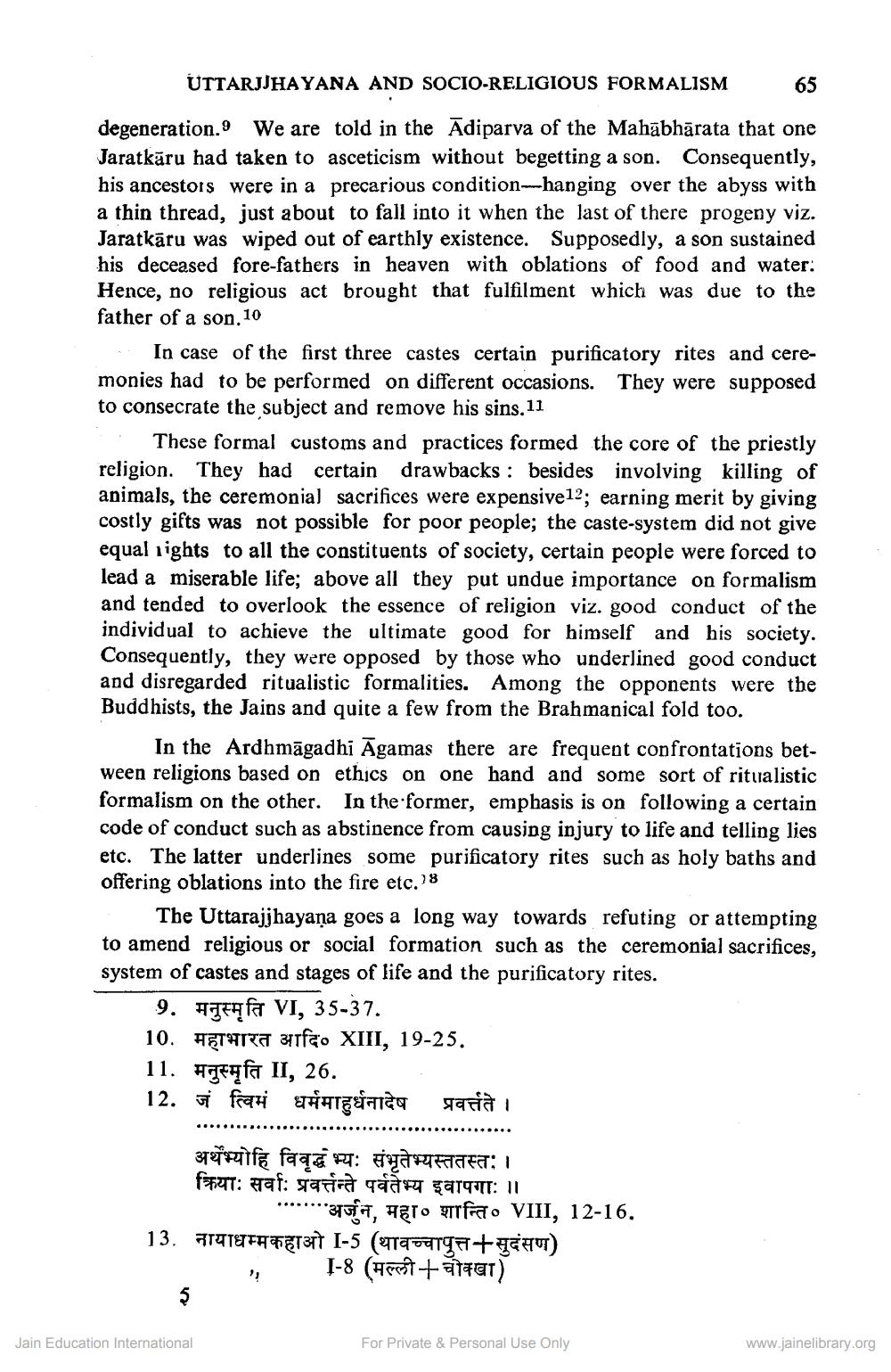________________
UTTARJJHAYANA AND SOCIO-RELIGIOUS FORMALISM
65
degeneration.9 We are told in the Adiparva of the Mahābhārata that one Jaratkāru had taken to asceticism without begetting a son. Consequently, his ancestors were in a precarious condition-hanging over the abyss with a thin thread, just about to fall into it when the last of there progeny viz. Jaratkāru was wiped out of earthly existence. Supposedly, a son sustained his deceased fore-fathers in heaven with oblations of food and water: Hence, no religious act brought that fulfilment which was due to the father of a son. 10
In case of the first three castes certain purificatory rites and ceremonies had to be performed on different occasions. They were supposed to consecrate the subject and remove his sins. 11
These formal customs and practices formed the core of the priestly religion. They had certain drawbacks : besides involving killing of animals, the ceremonial sacrifices were expensive12; earning merit by giving costly gifts was not possible for poor people; the caste-system did not give equal nights to all the constituents of society, certain people were forced to lead a miserable life; above all they put undue importance on formalism and tended to overlook the essence of religion viz. good conduct of the individual to achieve the ultimate good for himself and his society. Consequently, they were opposed by those who underlined good conduct and disregarded ritualistic formalities. Among the opponents were the Buddhists, the Jains and quite a few from the Brahmanical fold too.
In the Ardhmāgadhi Agamas there are frequent confrontations between religions based on ethics on one hand and some sort of ritualistic formalism on the other. In the former, emphasis is on following a certain code of conduct such as abstinence from causing injury to life and telling lies etc. The latter underlines some purificatory rites such as holy baths and offering oblations into the fire etc.8
The Uttarajjhayana goes a long way towards refuting or attempting to amend religious or social formation such as the ceremonial sacrifices, system of castes and stages of life and the purificatory rites.
9. HOEF VI, 35-37. 10. HET Ta ufo XIII, 19-25. 11. #Tyfa II, 26. 12. u fram #
h ida garai
अर्थेभ्योहि विवृद्ध भ्यः संभृतेभ्यस्ततस्तः । क्रियाः सर्वाः प्रवर्त्तन्ते पर्वतेभ्य इवापगाः ।।
*******30fa, Fero mrfra. VIII, 12-16. 13. FTATTFARETTI 1-5 (E1202177+45 )
1-8 (Herst tattet)
Jain Education International
For Private & Personal Use Only
www.jainelibrary.org




